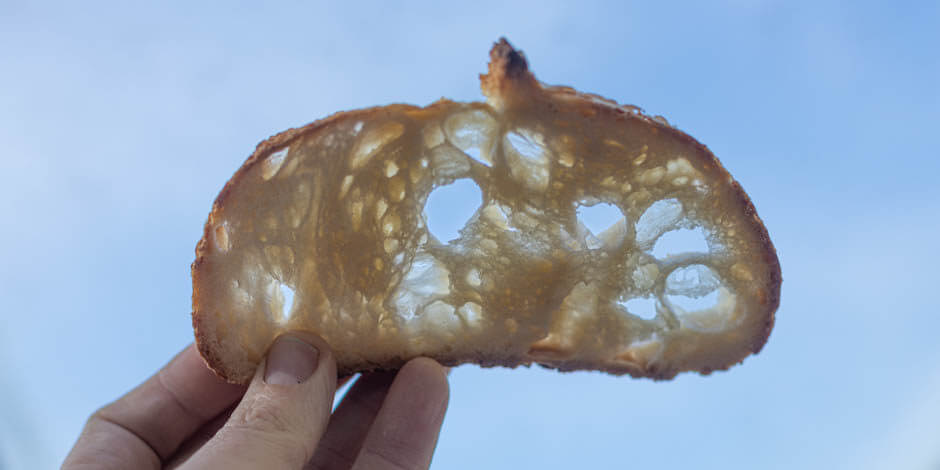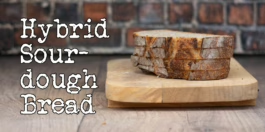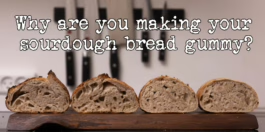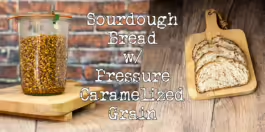So you’ve been baking sourdough bread for a while. You’ve got shaping covered, you know how to develop the gluten in the dough, and you even get fermentation right, almost every time, but the one thing that eludes you is the fabled open crumb. Well, the Foodgeek comes to your rescue. This is my recipe for open crumb sourdough bread.
When that’s said, this is NOT a beginner recipe, so if you’re just starting in the sourdough game, you should check out my Master Recipe for Artisan Sourdough Bread. It breaks everything down and makes it easy.
If you are just here for the recipe, you can press the button underneath to be automagically transported to the recipe:
Jump to Recipe Jump to VideoWhat are the important things for getting an open crumb?
I’ve done a bunch of experiments on what makes a difference for an open crumb on YouTube.
This recipe is the conclusion of those experiments and what is and isn’t important for getting an open crumb in your sourdough bread.
The 4 most important things to get an open crumb are:
- Fermentation
Nailing fermentation is the most important factor in getting an open crumb. Letting the dough rise about 50% during bulk hits the mark every time. - Flour
What flour you use is very important. Unfortunately, bread flours aren’t all the same, some great, others, not so much. So you have to test different flours to see what results you get. I’ve collected a list of bread flours that I am told are good. So that’s a place to start.
Generally, you should use a low extraction (highly sifted) flour with a medium-high amount of gluten. You need strength, but not all the strength in the world. - Hydration
Not high hydration, but the right hydration for your flour. You need to have a soft elastic dough that holds together. - Shaping
The more gentle you shape, the more wild the crumb will be. Conversely, the more violent you are with the dough, the more uniform the crumb will be. It’s all about balance.
Start gently to have the highest probability of open crumb, and then work your way from there. It’s not gonna happen in one bake session.
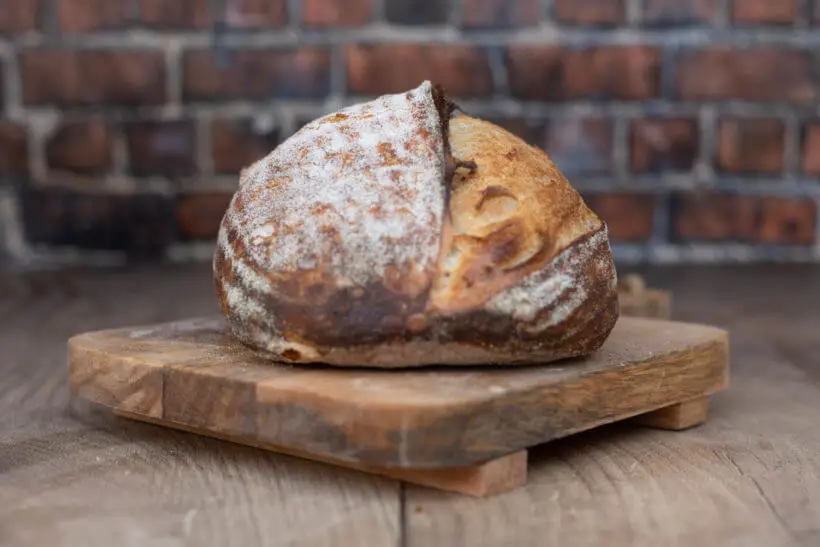
The formula in this open crumb sourdough recipe
Vitals
| Total weight | 1400 grams |
| Pre-fermented flour | 9.1% |
| Hydration | 80% |
| Yield | 2 loaves of bread |
The dough
The dough is pretty simple. It uses low-extraction, medium-high gluten bread flour. This means this is an all-white bread. I’m not saying you can’t get open crumb with lots of whole grains, but that’s for the experts. Start with this.
Generally, the more you pay for your flour, the better it tastes, so don’t skimp out. Find a great combination of great bake potential and taste.
The hydration is 80%. You need to scale this to suit your flour. The dough should be pliable, soft, extensible and have great gluten development.
The inoculation is 20%, which works fine when the temperature is 20°C-30°C/68°F-86°F. If the temperature is outside of that range you may want to scale up or down (down slows fermentation, up speeds up fermentation).
The salt content is 2%, but in all honesty, I usually go for 2.5% when I bake. It just tastes better.
| Weight | Ingredient | Baker's Percentage |
|---|---|---|
| 700g | bread flour | 100% |
| 546g | water | 78% |
| 140g | starter (100% hydration) | 20% |
| 14g | salt | 2% |
If you want to play with the formula, change quantity, hydration, inoculation, or other things, you can do so here in my
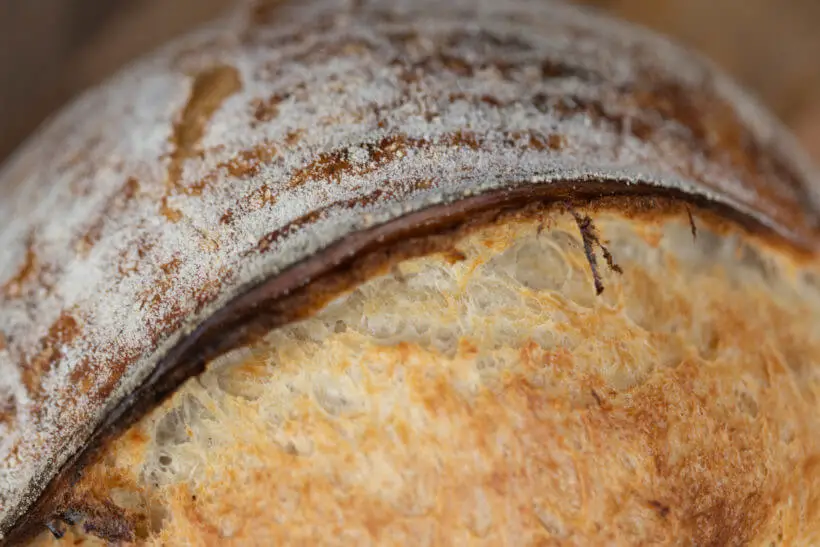
The conclusion of this open crumb sourdough recipe
So the success criteria for this bread are simple. The crumb needs to have lots of large holes, but it still needs to taste amazing. It sounds simple enough, but it’s a perfect storm of factors that need to come together in harmony for it to go well.
When it goes well, you get an awesome, gorgeous bread that tastes amazing and that is what we get here.
In the immortal words of Duke Nukem: What are you waiting for? Christmas?
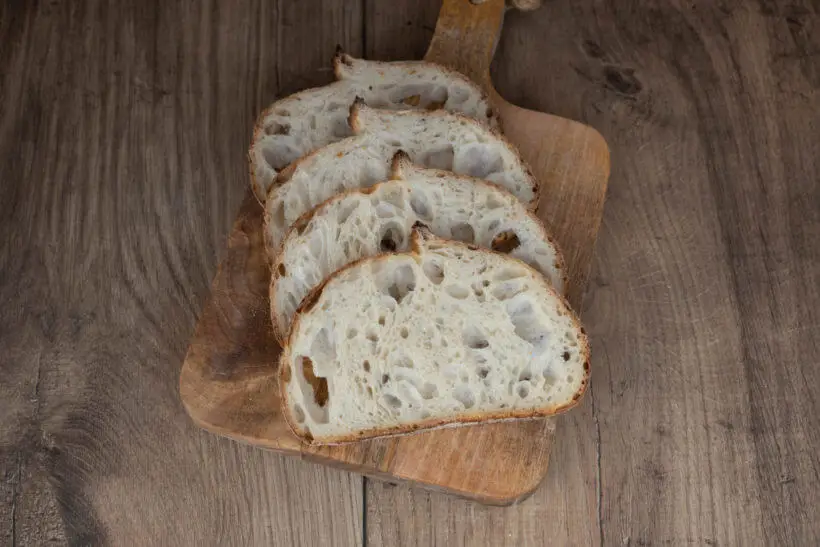
Please share this open crumb sourdough recipe on social media
This is my recipe for open crumb sourdough bread. If you like the recipe please consider sharing it with like-minded bread lovers on social media.
If you make it and post it on Instagram, please tag me as @foodgeek.dk so I can see it. That would make me very happy.

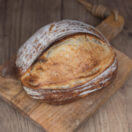
Open Crumb Sourdough Bread
Equipment
Ingredients
- 700 g bread flour
- 546 g water
- 140 g sourdough starter fed and grown to its peak
- 14 g salt
Instructions
Mix the dough
- To a medium bowl add: 700g bread flour and 14g salt.
- Then mix it with your hands.
- Then add: 140g starter and 546g water.
- Then mix the dough with your hands until it comes together in a shaggy mess. Make sure that every bit of flour is wet.
- Then leave the dough to rest covered for an hour to develop the gluten.
Bulk fermentation
- Perform three sets of stretch and folds spaced out by 30 minutes.
- Check the gluten development by pulling a windowpane; it should be okay by now. If it tears, you may have flour with low gluten, affecting the process.
- Put the dough in a see-through container with relatively straight sides. It will help you monitor the growth and get the perfect fermentation.
- Level the top of the dough.
- Then mark the top of the dough and where the dough will have grown 50% on the container. I use a whiteboard marker.
- Put it somewhere warm to proof. I use a Brød & Taylor proofer set to 30°C/86°F.
- Proof until grown by 50%. Expect it to take in the ballpark of 3 hours in the proofer, but don’t get hung up.
Divide and pre-shape
- Divide the dough into two equally sized pieces.
- Pre-shape them using coil folds to be as gentle as possible; if you are unsure how to do this, watch the video.
- Once they’re pre-shaped, let them rest on the kitchen counter for 20 minutes.
Final shape
- You should go for a bâtârd or cigar-shaped loaf for an open crumb. If you are unsure how to do this, watch the video.
- Once they are shaped, put them into bannetons lined with some linen.
- Then put them into the fridge and let them retard for at least 8 hours, but up to 48 hours.
- Note that your fridge needs to be set very cold to work.
Bake
- Then when you are ready to bake, heat your oven to 260°C/500°F with baking steel or baking stone inside. If you can turn off your fan, you should do so.
- You have two options for baking this: dutch oven or steaming the oven.
- If you are using a dutch oven, you should add that to the oven.
- You should add a ceramic or metal pan at the bottom big enough to hold a rolled-up towel and a small pan filled with lava stones if steaming.
Dutch oven bake
- Grab a dough from the fridge and dust the bottom with rice flour, and flip the dough onto a peel.
- Score the dough, and add the dough to the dutch oven. Put the lid on and close the oven door.
- Turn off the oven, and let the bread bake for 20 minutes.
- Remove the lid from the dutch oven, turn the oven back on using the fan, and set the temperature to 230°C/450°F. Bake for another 30 minutes.
- Remove the bread, and let it cool on a wire rack.
Steaming bake
- About 10 minutes before you bake, add a rolled-up towel to the bigger pan in the oven. Pour over an entire kettle of boiling water. Make sure the whole towel gets soaked.
- Close the oven door and let the steam saturate the oven.
- Boil some more water that you need to use for the smaller pan. You’ll need about 2.5 deciliters or a cup of water.
- Grab a dough from the fridge and dust the bottom with rice flour, and flip the dough onto a peel.
- Score the dough.
- Open the oven carefully not to let too much of the steam out.
- Then add the dough on top of the baking steel.
- Then grab the boiling water, and pour it over the lava stones. Quickly close the oven.
- Turn off the oven and bake for 20 minutes.
- Remove the steaming pan and close the oven.
- Using the fan, turn the oven to 230°C/450°F and bake for another 30 minutes.
- Take the bread out of the oven, and let it cool on a wire rack.



